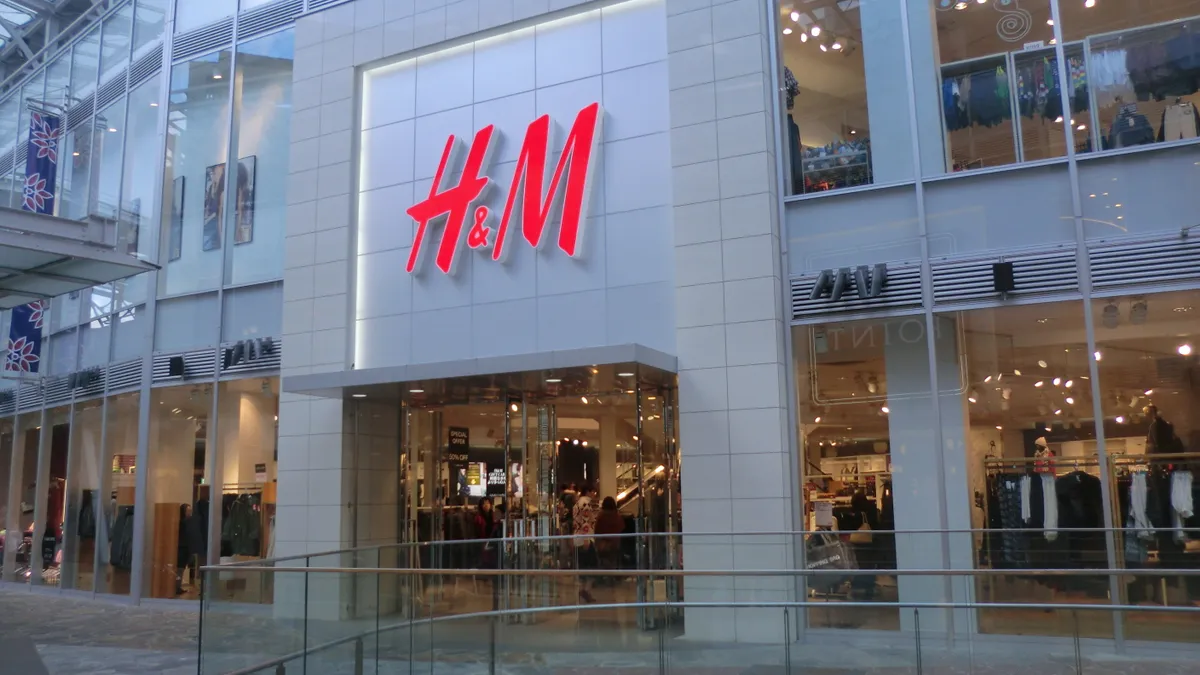Dive Brief:
-
H&M on Thursday said that bloated inventories continued to plague sales and force markdowns in the second quarter, though currency fluctuations eased that somewhat. Sales including including taxes rose 2% to 60.46 billion Swedish krona ($6.74 billion as of Friday) from 59.54 billion a year ago. Net profit rose from 3.56 billion krona a year ago to 4.6 billion, shy of the FactSet analyst expectation cited by Marketwatch, for 4.74 billion krona.
-
The quarter was colored by the retailer's ongoing inventory problem. Stock-in-trade as of May 31 rose 13% (or 11% in local currencies) to 36.3 billion krona ($4.05 billion), according to a company press release.
-
For the first half of the year, sales remained roughly flat at 114.02 billion krona. In a statement and in comments to analysts Thursday, CEO Karl-Johan Persson promised "a stronger second half."
Dive Insight:
As a fast fashion retailer, H&M in recent quarters has struggled with both, as logistics snafus and style misses both continue to swell inventories and drag down profits.
Changes to the supply chain meant to speed up distribution led to glitches that bungled merchandise management in Europe and the U.S. But those problems are on the mend, H&M executives told analysts on Thursday. Even so, the severely bloated inventories also come from some serious fashion misses that can't be explained by new logistics systems.
"We are of course solving the temporary interruptions, and we are making the adjustments needed to the new systems. Due to the interruptions in inventory, backlog was still tough in these affected markets, and this is something that we are gradually correcting," Persson told analysts, according to a transcript from Seeking Alpha. "In addition to correcting the imbalances of the assortment, this work also includes all the time getting better in terms of design, quality and price. And here, we are already seeing positive signals from our summer collections which have sold better than the equivalent collections last year."
The comments about "design, quality and price" suggest that supply chain and style adjustments forced by fast fashion (especially H&M and rival Zara) onto apparel brands like American Eagle, Abercrombie & Fitch and Old Navy are taking some steam out of its disruption of the apparel market. Those traditional brands lately are seeing rising sales online and off, and they have succeeded in delivering more in-demand merchandise and fewer discounts.
Meanwhile, H&M is facing a massive pile-up of inventory that markdowns alone won't likely pare down, so it is looking at selling through third-party resellers in markets where it doesn't operate. The "clear majority" of it is either current-season or seasonless products, Chief Financial Officer Jyrki Tervonen said, which executives said makes it easier to manage the correction.
But the correction has been slow in coming. Rising inventories have plagued H&M for a while, yet markdowns in the third quarter will be higher than Q3 last year, Persson warned. Still, the retailer hasn't tempered its ambitions for the second half of the year. H&M is now being more cautious about amassing new inventory that is more in season and more targeted to its core customer, and acquiring less, Persson also said.













